Conflict, Friend or Foe?
It can get ugly! And let’s be honest, we all know a few people who seemingly create clouds of conflict everywhere they go. Hopefully you are not one of them! In fact, even the most mild-mannered can get embroiled in heated disagreements that can be uncomfortable.
Conflict is inevitable and can even be healthy. It appears when competing or incompatible options exist. It does not necessarily imply hostility. It is not always a bad thing. In fact, it can also provide benefits. A total lack of conflict is usually a bad sign. A sign that there is not enough diversity of thought and/or an authoritarian environment.
If you have ever managed people or processes, you have no doubt found yourself in the middle of workplace conflict. In fact, according to a study commissioned by CPP Inc. — publishers of the Myers-Briggs Assessment and the Thomas-Kilmann Conflict Mode Instrument — U.S. employees spend 2.1 hours per week involved with conflict, which amounts to approximately $359 billion in paid hours (based on an average hourly earnings of $17.95), or the equivalent of 385 million working days.
According to the report “Workplace Conflict and How Businesses Can Harness It to Thrive,” the following statistics demonstrate how pervasive conflict is in the workplace:
85 percent of employees deal with conflict on some level
29 percent of employees deal with it almost constantly
34 percent of conflict occurs among front-line employees
12 percent of employees say they frequently witness conflict among the senior team
49 percent of conflict is a result of personality clashes and “warring egos”
34 percent of conflict is caused by stress in the workplace
33 percent of conflict is caused by heavy workloads
27 percent of employees have witnessed conflicts lead to personal attacks
25 percent of employees have seen conflict result in sickness or absence
9 percent have seen workplace conflict cause a project to fail
The inability of leaders to effectively manage conflict and bring about positive resolution is costing them nearly one full day of productivity per month — two and a half weeks per year. Unsurprisingly, almost all employees recognize the critical need for conflict management skills in the workplace. Do you recognize your need for conflict management skills?
In fact, the study found that 70 percent believe managing conflict is a critically important leadership skill. And 54 percent of employees believe managers could handle disputes more effectively by addressing underlying tensions immediately when they surface.
And yet, conflict does not have to bring about negative results. When managed effectively, conflict can stimulate progress, deepen trust and strengthen relationships — all of which enhance productivity and optimizes bottom-line results. It can be a great opportunity to shake things up and come up with creative ideas for change.
What is conflict?
For the purposes of the study cited above, the authors defined conflict as: “any workplace disagreement that disrupts the flow of work.”
We could say that Conflict is a struggle involving opposing ideas, values, and/or limited resources. A crisis of some sort. It’s usually motivated by the incompatibility of ideas, values, and/or goals.
Let’s check out some of the dangers and positive power of conflict
Dangers of Conflict
Alienation
Decreased productivity
Out-of-hand hostility
Decreased possibility for rational thought
Coalition formation with polarized positioning
Erosion of trust
Time-consuming
Sabotages decision-making
Positive effects of conflict
Increases motivation and involvement
Enhances problem/solution identification
Promotes group cohesiveness
Provides reality adjustment
Increases knowledge and/or skill
Enhances creativity
Contributes to goal attainment
Triggers growth
Increases the chance for genuine commitment
Obviously, learning to handle conflict effectively is critical for leaders. Part of understanding conflict better is making sure we are not working under faulty thinking. When employees and leaders understand how to manage conflict and harness its positive powers, conflict can transition from a cost to the bottom line to an investment in the organization and the people who work for it.
This quote from the report summarizes the positive power conflict can bring to an organization:
“If organizations invest in building the awareness of self and others on which better relationships depend, they will see the energy created by interpersonal friction generate sparks of creativity, rather than consuming flames. HR, leaders, and employees must all accept their responsibility for becoming competent conflict managers.”
What is conflict in your workplace costing you? Invest in conflict management and dispute resolution training and harness the creative power conflict can bring to your organization. SCHEDULE A CALL with Dr. Ada to explore how to manage conflict better.

